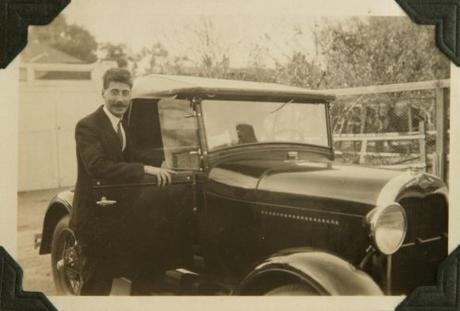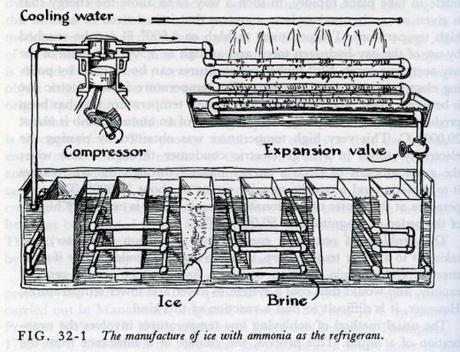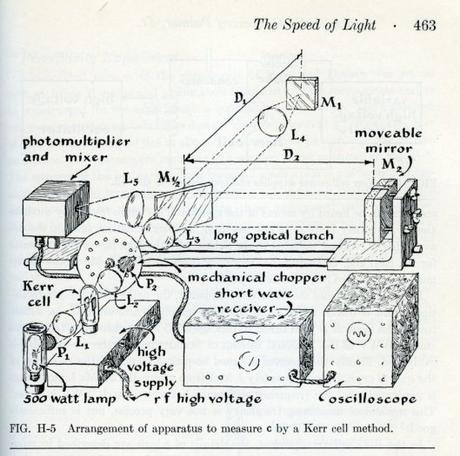
Roger Hayward, ca. 1930s.
[An examination of the history of the W.H. Freeman & Co. publishing house as viewed through the lens of Linus Pauling and his colleagues. This is part 2 of 8.]
As Linus Pauling’s chemistry series at W.H. Freeman & Co. moved forward, a third member of the team proved to be of crucial importance: illustrator Roger Hayward.
As we’ve covered previously, Bill Freeman initially employed Hayward to create the illustrations for Pauling’s General Chemistry textbook and, suitably impressed, wound up commissioning him for a number of other projects. Freeman quickly saw that Hayward was an incredibly talented illustrator and the two formed a close friendship that lasted through the years.
Freeman even recruited Hayward to design his new office when the company moved from Market Street. Freeman was colorblind and admitted that he needed help when it came to outfitting a space. In the past, he had relied upon a “Vice-Presidents-in-Charge-of-Decoration” committee made up of several female colleagues, but ultimately decided that Hayward’s insights were a better fit. In particular, Freeman commissioned Hayward to create an illustration meant specifically to hang in his office. Hayward gladly obliged and, a few weeks later, presented Freeman with a large illustration of molecules that – as Freeman’s staff informed him – were a lovely shade of apricot.

A Hayward illustration used in the first edition of General Chemistry, 1948.
Professionally, Hayward was a fundamental asset to the company, and in more ways than one. For example, when Freeman was courting John D. Strong, then at Johns Hopkins, for a book on optics, Hayward played a crucial role in convincing Strong to sign with the San Francisco firm rather than a larger publishing house on the East Coast. Once secured, Hayward and Strong worked well together, engaging in lively discussions as they collaborated on the manuscript.
As their relationship flourished, Freeman became a strong supporter of Hayward and his work. On one noteworthy occasion in the early 1950s, a textbook published by Houghton-Mifflin came under scrutiny because it contained a number of illustrations that closely resembled those that Hayward had created for use in General Chemistry. Hayward noticed immediately and brought the matter to Freeman’s attention. In his reply, Freeman suggested that
No one can copyright an idea. One can copyright the expression of an idea. This last applies, not only to the use of words…but to illustrations as well.
Believing that Houghton-Mifflin had indeed committed a violation of this type, Freeman became aggressive. In the end, he negotiated a deal with the president of the company stipulating that Houghton-Mifflin would pay a $0.04 royalty fee to Hayward for each copy sold.

Betty and Roger in 1956.
Hayward’s value was such that Freeman ultimately thought it wise to offer him a contract with the company, rather than enlisting him periodically as a freelancer. While beneficial to the company, this contract also offered the promise of a steady wage and a new era of financial security for Roger and his wife Betty.
The agreement seemed simple on paper. Hayward would continue to receive royalty payments for relevant books published prior to the contract, but for future work, he would receive an annual salary of between $4,500 and $7,500, ($40,000 to $67,000 in today’s dollars) depending on how many hours he logged. And though he would be on salary, Hayward would not be asked to be physically present at the office as long as he kept track of the time that he spent working on projects for the company.
The contract specifications were satisfactory for Hayward, particularly because of the royalties language, as continuation of these payments would insure some degree of income for Betty were Roger to pass away suddenly. Indeed, perhaps the most significant benefit of the contract was the health insurance that the company offered to Hayward, who suffered from asthma. Importantly, the insurance agreement stated that Hayward and his family would receive health benefits during the run of the contract and also for two years after any event that led to his incapacitation or death. The only new requirement of Hayward was that he commit to completing illustrations for the exclusive use of Freeman & Co. and a partner publication, Scientific American magazine.

Hayward illustration used in Concepts of Classical Optics, by John D. Strong, 1958.
After a period of negotiation, Hayward agreed to terms and, in 1958, began working as a contract employee. His first task was to experiment with alternatives to color printing and texturing. While Freeman knew that color printing might help set his firm apart from its competitors, he worried that the costs were too high. With Hayward, Freeman tinkered with screen tone and half-tone techniques, but neither proved especially successful.
Other professional complications emerged not long after. A year into his contract, Hayward began to feel that he was being treated more as a draftsman than an artist, and was too often compelled to engage in what he described as “uncongenial work.” Freeman was sympathetic to Hayward’s lament, but only to a point:
The boys around here certainly have tried to see that each of us doesn’t have to misuse his talents or have a disproportionate amount of the uncongenial. How in the world could we keep this spirit if we had an exception, one sharing in the perquisites but able to rule (by himself) that he would not do some share of the work because he decided it was uncongenial?
But drudgery wasn’t Hayward’s only concern. Increasingly he felt that authors were overly critical of his illustrations and unwilling to give him the respect that he deserved. As Hayward grew more and more unhappy, Freeman found himself spending a great deal of time mediating. This wasn’t necessarily out of character; he often referred to himself as “Old Man Freeman,” a persona of wisdom and benevolence that he felt he needed to embody as director of the company.
In Hayward’s case however, this persona began to wear thin. Circumstances reached a boiling point when George Pimentel, who published The Hydrogen Bond with Freeman in 1960, suggested corrections to drawings that Hayward had provided. Upon learning of these suggestions, the illustrator took immediate offense and refused to complete the project. Freeman intervened to remind Hayward that authors greatly respected his skill as an artist but that his job as a company employee was to take direction from the authors or, at the very least, to negotiate with them. In response, Hayward wrote
I see nothing in that [contract] which commits me to the philosophy that the author or any other person is always right. I certainly would never sign a contract which would require me to satisfy any person or persons who are not a party to that instrument.
Growing impatient, Freeman’s reply was terse
We and our authors are the sole judges of what goes into a book and you legally must abide by that principle or you do not fulfill your part of the bargain with this company.
Suitably chastened, Hayward apologized to both Freeman and Pimentel and resumed illustrating.
With enough of these conflicts however, Freeman saw that a contract was no longer benefiting the authors, the company, or Hayward. Eventually he offered to terminate the agreement and allow Hayward to revert back to freelance status, receiving additional payments on a royalty basis. Hayward accepted and his relationship with the company, as well as his friendship with Freeman, quickly returned to a mutually respectful and co-productive state.
Advertisements